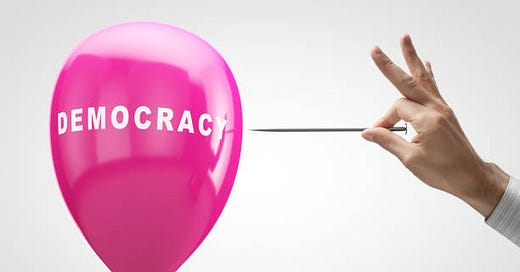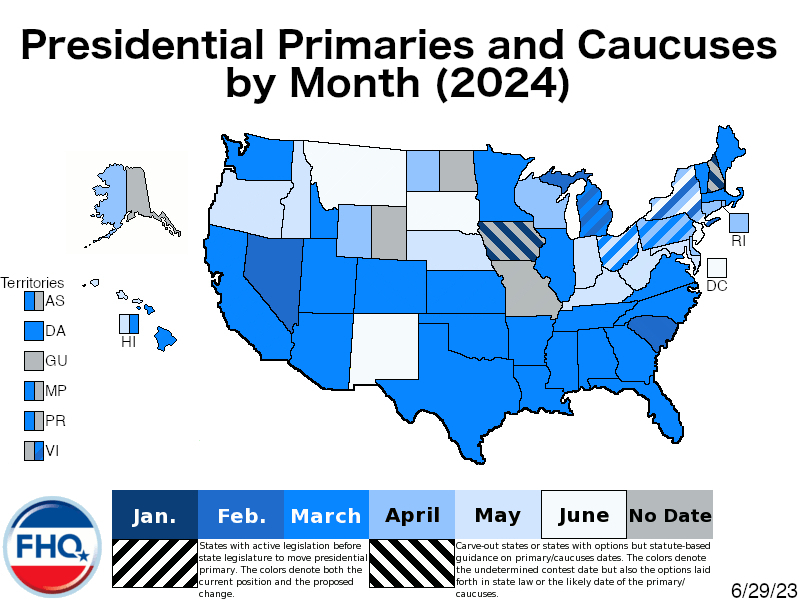Why British Elections Are Inscrutable to Americans (and Vice Versa)
What Lessons Can Americans Learn from the British System?
Let me start with this: I am not an expert on the governmental systems of either the US or Great Britain. I write this because if you’ve ever been to England during an election season, you are amazed at the difference between that system and ours (i.e., the USA). I have been to Great Britain often and marvel at their election system.
I am once again in England, this time for about a month, and it is the “heat” of election season. But if you’re not directly tuned into the election, you wouldn’t even know it is happening. It also means this post may have a few more mistakes than usual.
What Americans Learn
Americans are not any more or less stupid than anyone else. However, we need to be taught or informed about other systems in other countries. This is not a knock against Americans, but we have a history and school system that does not stress teaching these differences. This is important now, but historically, the US has been isolated from other countries by distance and the oceans. To put it in context, however, we are not really taught about out own system of elections because “civics” isn’t a section on our complex testing / grading system in school anymore (more on that another time.)
What are the Main Differences Between the Systems?
This is an overview of the two countries. Below this section is a detailed look at the systems of elections and results. They present a detailed look at the process for each nation. This is just an overview of the differences.
At the federal level, America has set election dates, the UK does not,
In the UK, an election can be “called for” any time up to 5 years. So their equivalent of Congressmen (Members of Parliament or MPsa) often stay in office much longer than some of their US peers.
In the United States, we have a federal election every two years. All members of the House are elected then, as are 1/3 of the Senate and the President every alternate two years. This system offers very few opportunities to reset the government parties. Even a landslide in the House for two years does not mean that the Senate or Presidency will also turn over.
The campaign length is exponentially longer in the US.
In the UK, there is a six-week period between an election being called and its holding.
This period includes the time to pick a nominee.
In the US, with our set election times, the presidential campaigns last about a year. PS—that is a long time to listen to partisan nincompoopery.
The amount of money spent on an election is obscenely different.
In the UK, the money spent is limited to about 34 Million pounds (~ $42 Million). That amount is based on the party putting up a candidate in all 632 districts. Since this amount is based on the number of districts being challenged, it can be much less. For example, the Scottish National Party does not compete in England, Wales or Northern Ireland.
In the US the amount of money spent is essentially unlimited,
In the last Presidential cycle, $14.4 Billion dollars was spent. That is 342 times the amount the UK spends in the entire cycle.
The last House of Representatives spending was $8.9 Billion. That is 211 times the amount the UK spends.
Primaries
In the United States, every federal election includes primaries for each district. These select the partisian candidates at the general election. There are multiple types of primaries (see Section below).
Advertising
In the UK, there is no television or radio campaign.
The national broadcasters set a period for each party to lay out their plans (this is free).
In the US, there is unlimited television campaigning. There are Presidential ads, Senate and House ads, and ads for the various state propositions.
And yes, it is as awful as it sounds.
I think the UK system is less annoying and much cheaper than ours.
A Quick(ish) Review of the US System of Elections
This is necessary to understand why Americans are confused about elections at home and worldwide. Our unnecessarily complex system and lengthy processes also drive Americans to “tune out” from the political noise.
Here are some of the basics that confuse most non-Americans and, to be honest, most Americans.
Our election cycle is uniquely staggered. The US has a federal election every two years, and each time, a different cycle of elected officials is decided.
Congressmen in the House of Representatives serve for 2 years based on elections every even-numbered year.
Senators are elected for 6-year terms.
Every two years, 1/3 of the Senate is up for election. States do not have both Senators on the same two-year schedule. For example, NY’s Charles Schumer was last elected in 2022. NY’s other Senator, Kirsten Gillibrand, was last elected in 2018 and so will be up for election this year (2018 + 6 = 2024).
You will note in this system that there will be no New York Senate candidates in 2026, since the current Senators elections were in 2022 and 2024.
Interestingly, this is a change from the Constitution. Senators used to be appointed by the Governor or Legislators for their term. The system was changed in 1913 with the adoption of the 17th Amendment.
Our President is elected every 4 years and can be from either party, no matter who controls Congress.
Presidential elections are held in leap years.
Presidential votes do not determine the winner. (See bottom section - how electors work in the Presidential elections.)
The result is that Americans never get to vote for the entire federal government positions in one single election.
Our election cycle is chaotic and nearly constant.
Federal Elections are on the first Tuesday after the first Monday in November.
Tuesdays are a remnant of the 1787 Constitution. Elected officials keep it because it drives down votes, and incumbents are very safe.
Primaries are not limited to any constitutional standard.
City, County, and State elections are decided by each administrative body and are random.
For Example, California elects its governor the odd year AFTER the Presidential Election (so there will be an election in 2025)
Nearly all city, county, and state elections are held on a Tuesday to match the federal elections.
This means that Americans are nearly always voting or preparing to vote.
Then there are the distinctly confusing rules about emergency elections for the Senate.
If a Senator dies (or is elected to a different job – like former CA Senator and current Vice President Kamala Harris - before the term is complete, then the process goes crazy (and this happens more often than you would think).
The Governor of the State appoints a new Senator, who serves until the next election. For example, the California governor picked Laphonza Butler to serve out Diane Feinstein’s term when she died in 2023.
At the next (federal) election cycle, there is a vote for the new Senate position. The appointed Senator can be a candidate in this new Senate Vote. But that Senator will only serve 2 years, and then there is a new election for either the remainder of this term (2 or 4 years) when times out.
OR for a full term if that Senator was supposed to be elected that cycle. Example: This election (2024), the CA Senate Seat is open this year because Diane Fienstien died, and the temporary appointed Senator promised not to run. The top two candidates from the primary are Steve Garvey (yes, the baseball player!) and Adam Schiff. Since they will be elected during the normal cycle, they will serve for 6 years and will be elected in 2030.
Alice in Wonderland is simple compared to our… Primary Elections.
Last but not least, we have primary elections to decide who the two final candidates for any office will be. This occurs in federal elections and in each state (and sometimes city) election. I say two candidates because only the two-party candidates have a chance of winning in most areas.
Bernie Sanders is an Independent but participates in the Democratic Presidential primary. He won his seat the first time as a Democrat and only registered as an Independent after being the encumbant. Even with that, Democrats don’t run a Vermont candidate because Bernie conferences with the Democrats.
Primary elections, when it is not Presidential election year, are usually held a few months before the final election date.
During years when there IS a Presidential election, primaries are all over the map. This year the actual election for President is November 5th. Primaries to determine the candidate start at the end of January - 11 months before the election! Then the primaries occur state by state until June.
Most states have different primary candidates for each region.
California and Alaska primaries take the top two vote-getters for the actual election in the primary regardless of party. In California, this was done because Democrats always win elections, and the idea was to nominate less radical politicians.
Maine uses a ranked voting system to define its candidates and winners.
Radicalization of Parties
The primary system, combined with gerrymandering, means that a seat is often safe for a Republican or Democrat in a single district. And if a primary is relatively unimportant, only the most zealous come out to vote. This is why some of our Congressmen are so extreme in their positions. In many Republican districts, the most extreme win the primary, and so the competition is for who can be the most right-wing. Because they are safe seats, the candidate is then easily elected to Congress.
.
Five states have different dates for the primaries for Democrats and Republicans.
If a state thinks its Presidential Primary is too early for other races, there is sometimes a second state primary for the other offices!
Our Elections are Privately Funded
The American system is defined by fund-raising in a nearly “arms race” system. If one candidate has significantly more money than the other, they will generally win (self-funding millionaires are less successful).
This system tends to reward incumbents who can do favors immediately and thus receive donations from lobbyists constantly.
Money donations are supposed to be limited, but Political Action Committees are allowed to take unlimited funds and run “issue” ads without technically mentioning a candidate. These PACs can use unlimited money.
Corporations are defined as “people” for fundraising purposes. Meaning they can donate all they want to either a candidate or a PAC.
This resulted from a Supreme Court decision when activists tried to limit corporate donations.
Where does all that money go?
The US candidates are allowed to use these unlimited funds to advertise on TV, Radio, Newspapers, online ads, and direct call centers.
The President is the leader of the government.
They are elected every four years
They do not have to be from the party which controls any part of Congress
They are limited to 2 terms (8 years) or 10 years (if they were promoted from VP).
The President appoints the Supreme Court Justices, and the Senate approves or blocks them. This results in appointing more partisan judges. When the Senate and the Presidency are from the same party, approval can be obtained by bypassing the opposing party.
The Federal Supreme Court Justices are appointed for life and not elected.
Presidents have been nominating younger and younger Justices to maximize the time a Partisan Judge can be on the court.
There are different rules for various state supreme courts:
Some states have elections for State Supreme Court, each state may have different rules and terms.
Some states have the governor appoint new state Supreme Court judges who serve a set term and are then either reelected or voted out.
Some state Supreme Court nominees are vetted by a bipartisan system or from a list drawn up by this type of committee.
How state and federal election districts are defined.
District Boundaries are usually set once every 10 years, after the census.
Most Districts are defined by the state legislature, which means they are often very oddly shaped to maximize the number of state seats that go to that party.
Thirteen states, like California, Montana, and Ohio, use an independent or bipartisan commission to determine boundaries
Some states, particularly in the South, also draw districts to reduce the political power of minorities. For example, Mississippi’s population is 37.3% Black. But blacks have been loaded into one district, and the State’s Congressional delegation is currently 6 members, 1 of whom is Black.
This used to be illegal, but the Supreme Court has just said that this is legal. The Supremes decided shoving all those black people into 1 district was politically based, not race- based. They came to this conclusion based on the fact Black people all vote for Democrats. Therefore, shoving all these Democrats – not minorities – is now legal (as of 2023).
The above maps illustrate how districts can be structured for political gains. IN 2010, Republicans gained control of Wisconsin’s Legislature and redid the maps for district elections that send Representatives to Congress. Changes were made to the maps to concentrate Democrats into districts and distribute Republicans in the other districts. So the Democratic districts are 90% democratic, leaving the other districts with a majority Republican district of 5% or so by voters. You can see that in 2012, despite there being over 50% of the vote for Democrats, the delegation sent to the legislature was 60% Republican. Actually, it is slightly more than 60% at 60.6%, which is enough to overcome a Governor’s veto.
Processes in Great Britain
Unlike American political processes, the Great Britain elections and outcomes differ significantly. Before we get into some significant election processes, let's lay the groundwork.
There is no President.
The ceremonial function as “Head of Government” is the Monarch – presently King Charles III.
The political “Head of the Government” is the Prime Minister.
The Prime Minister (PM) is the face of one of the parties. This is much like the US’ “Speaker of the House”, only that the PM is in charge of the entire government, not just a single legislative chamber.
The legislature has two chambers, the House of Commons and the House of Lords.
Only the House of Commons is elected by the citizens.
The House of Lords comprises people appointed by the Queen or King, the Church of England, and political appointments. The House of Lords was initially peopled by titled heredity and further appointments from the Monarch. This was amended in 1999.
Elections for members of the House of Commons occur only when called by the majority party, but they MUST be called at least every 5 years.
The entire House of Commons is elected at the same time. The winning party controls the government until the next time an election is called.
In rare cases, if no party wins a majority of the seats, a coalition of 2 or more parties runs the government. Traditionally
These are traditionally called on a Thursday.
Members of The House of Commons do not have to reside in the district they represent. Often times the political party will put the Prime Minister into a completely safe district that is not near their physical home.
The current British Election was called for on May 26th, and the election will be held on July 5th.
How Did This All Happen?
The Constitution was unique when it was passed. It created a Representative Democracy, where legislators were supposed to be close to the constituency they represented and then represent their interests in Congress.
Many nations copied this system but most simplified the conditions for elections and representation. Americans have not meaningfully changed our elections since 1787.
Can America “Fix” Its System?
No.
Perhaps a bit more explanation is needed. The Constitution as written can be changed “easily” with Amendments. Amendments need 2/3 of the Congress to approve and then 2/3 of the States to ratify those changes. With our deep political divisions, getting 2/3 of Congress to do anything is almost impossible.
The people who benefit from the current system are elected officials, they have no desire to change it. America’s best interests are not considered, only the self-interest of the elected official and the Corporations that fund these politicians.
* The Icing on the Cake: Electorial Process for President.
And then there is how we finally elect the President.
In reality, our Presidential vote is based on a set of state electors. These state electors then vote as a block for the Presidential Candidate that won that state. This results in each state having as many Presidential votes as the total number of legislators in the Senate and the House of Representatives for each state.
This gives excess power to the small states. Take Wyoming, with one Representative in the House and two Senators (all states have two Senators). So, each elector in Wyoming represents 194,000 people. But each elector in Texas represents 750,000 people (38 Representatives and two Senators). These electors have the same weight in voting for the President.
This also means that a state that votes 51% for a Republican and 49% for a Democrat has all its electors vote for the Republican.
In 2016, Hillary Clinton got 3 million more votes than Donald Trump. However, since the Hillary voters were concentrated in population-dense blue states, Trump won more electors, but a fairly wide margin.
This system means only a few states are actually competitive, that is only a few states will determine the election. In 2024 these competitive states are expected to be competitive.
Arizona - 11 Electorial Votes | 2016 Republican / 2020 Democratic
Georgia - 16 Electroial Votes | 2016 Republican / 2020 Democratic
Michigan - 15 Electroial Votes | 2016 Republican / 202 Democratic
Nevada - 6 Electoral Votes | 2016 Democratic / 2020 Democratic
Pennslyvania - 19 Electorial Votes | 2016 Republican / 2020 Democratic
Wisconsin - 10 Electroial Votes | 2016 Republican / 202 Democratic
The constant barrage of ads in these states is super offputting. Remember, the United States has multiple media markets in each state and so television advertising is concentrated there
You may ask why this system was ever put in place? Well, it tried to give a balanced and equal political weight for the slave and non-slave states. The original counting of people for the census, and therefore political power, counted a slave as 3/5s of a person, giving much more political weight to the Southern (slave) state voters.







